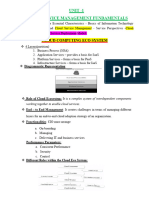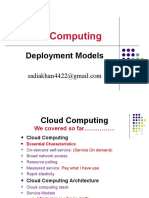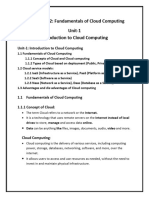0% found this document useful (0 votes)
31 views21 pagesUnit 3
Cloud Computing Unit-3 Important question Notes 100 % Pass
Uploaded by
hr.adminCopyright
© © All Rights Reserved
We take content rights seriously. If you suspect this is your content, claim it here.
Available Formats
Download as DOCX, PDF, TXT or read online on Scribd
0% found this document useful (0 votes)
31 views21 pagesUnit 3
Cloud Computing Unit-3 Important question Notes 100 % Pass
Uploaded by
hr.adminCopyright
© © All Rights Reserved
We take content rights seriously. If you suspect this is your content, claim it here.
Available Formats
Download as DOCX, PDF, TXT or read online on Scribd
/ 21



































































































